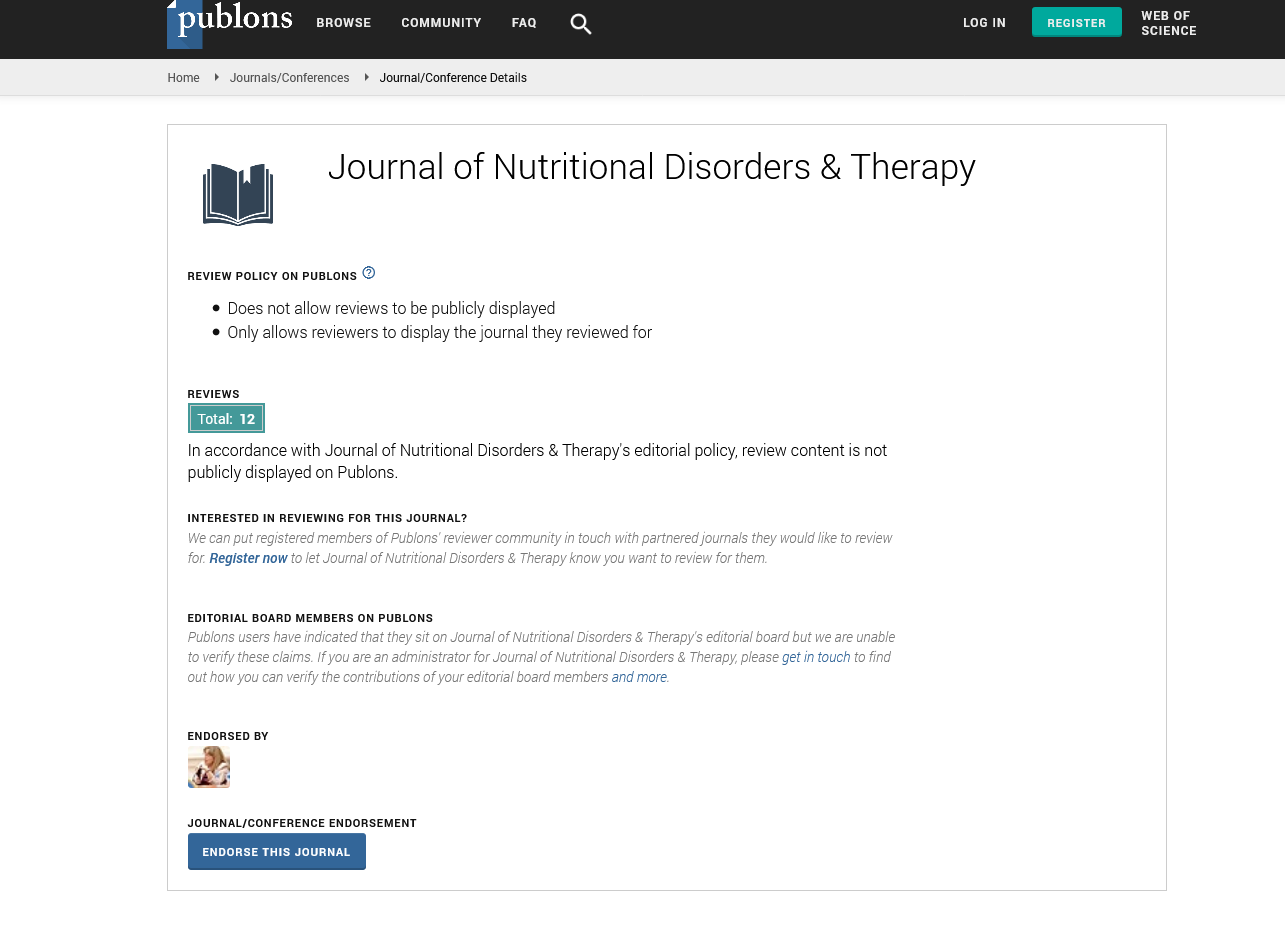Indexed In
- Open J Gate
- Genamics JournalSeek
- Academic Keys
- JournalTOCs
- Ulrich's Periodicals Directory
- RefSeek
- Hamdard University
- EBSCO A-Z
- OCLC- WorldCat
- Publons
- Geneva Foundation for Medical Education and Research
- Euro Pub
Useful Links
Share This Page
Journal Flyer

Open Access Journals
- Agri and Aquaculture
- Biochemistry
- Bioinformatics & Systems Biology
- Business & Management
- Chemistry
- Clinical Sciences
- Engineering
- Food & Nutrition
- General Science
- Genetics & Molecular Biology
- Immunology & Microbiology
- Medical Sciences
- Neuroscience & Psychology
- Nursing & Health Care
- Pharmaceutical Sciences
Perspective - (2024) Volume 14, Issue 3
Obesity and Complex Aneurysm Repair: Evaluating Class-Dependent Surgical Risks
Abdel Razik*Received: 26-Aug-2024, Manuscript No. JNDT-24-27082; Editor assigned: 29-Aug-2024, Pre QC No. JNDT-24-27082(PQ); Reviewed: 12-Sep-2024, QC No. JNDT-24-27082; Revised: 19-Sep-2024, Manuscript No. JNDT-24-27082(R); Published: 26-Sep-2024, DOI: 10.35248/2161-0509.24.14.304
Description
Obesity is a global health concern that significantly influences the management and outcomes of various medical conditions, including complex vascular surgeries. One such procedure, Fenestrated-Branched Endovascular Aneurysm Repair (FBEVAR), is a minimally invasive technique used to treat aortic aneurysms that involve the visceral and renal arteries. While endovascular repair offers several benefits over traditional open surgery, the class of obesity based on the Body Mass Index (BMI) is an important factor that may affect clinical outcomes after the procedure. This article describes how different classes of obesity influence the clinical outcomes following F-BEVAR, focusing on postoperative complications, technical challenges and the longterm prognosis for patients.
Obesity is categorized into three classes based on BMI: Class I (BMI of 30-34.9), Class II (BMI of 35-39.9) and Class III (BMI of 40 or higher), also referred to as morbid obesity. Each class brings distinct physiological and mechanical challenges to surgical procedures, including F-BEVAR. Patients with obesity often have comorbidities such as diabetes, hypertension and cardiovascular disease, all of which complicate the perioperative and postoperative phases of care. In addition, the technical demands of performing F-BEVAR in obese patients can affect surgical outcomes, including the risk of complications and the success of the repair.
One of the main concerns in performing F-BEVAR on patients with obesity is the technical difficulty associated with navigating the endovascular devices through tortuous or narrowed blood vessels. As obesity often leads to vascular calcification and other changes in vessel anatomy, it can be challenging for surgeons to properly position the fenestrated or branched stent grafts during the procedure. ClassIII obesity, in particular, poses the greatest challenge because excess body mass can limit the surgeon's ability to access the vascular system and manipulate instruments accurately. The additional soft tissue in the abdominal area may impede fluoroscopic imaging, which is assencial for the precise placement of grafts. As a result, the duration of the procedure may be extended, increasing the risk of perioperative complications such as bleeding or ischemic events.
Postoperative outcomes following F-BEVAR also tend to be worse in patients with higher classes of obesity. Studies have shown that the risk of wound complications, such as infections or dehiscence, is significantly elevated in patients with Class II or III obesity. The excess adipose tissue present in obese individuals creates an environment that is more prone to infection due to poor vascularization and impaired immune function. Additionally, obesity is associated with a state of chronic low-grade inflammation, which can negatively impact the body’s ability to heal surgical wounds and recover from the procedure. The risk of Deep Vein Thrombosis (DVT) and Pulmonary Embolism (PE) is also increased in obese patients, particularly in the postoperative period, further complicating recovery.
The presence of comorbid conditions such as diabetes and hypertension, which are prevalent in obese patients, can exacerbate these risks. Diabetic patients, for instance, may experience delayed wound healing and are more susceptible to infections. Hypertension increases the risk of complications related to blood pressure control during and after the procedure, potentially leading to issues such as bleeding or rupture of the aneurysm. Furthermore, patients with Class III obesity are often at higher risk for cardiovascular events such as myocardial infarction and stroke, both of which can be life-threatening in the perioperative setting.
Another significant factor impacting clinical outcomes following F-BEVAR in obese patients is the difficulty in achieving optimal postoperative management. Obese patients often have higher rates of prolonged hospitalization and require more intensive postoperative care compared to non-obese patients. The need for extended monitoring in Intensive Care Units (ICUs) is also more common in patients with severe obesity, as they are at increased risk of respiratory complications, including sleep apnea and impaired lung function. These patients may require longer periods of mechanical ventilation and are more likely to develop pneumonia or other pulmonary infections. Additionally, obesity-related complications such as venous stasis and immobility further contribute to the challenges of postoperative care.
Conclusion
The severity of obesity is a key factor in determining clinical outcomes following fenestrated-branched endovascular aneurysm repair. Patients with higher classes of obesity face increased risks during both the perioperative and postoperative phases of care, including technical challenges during the procedure, a higher incidence of wound complications and infections and a greater likelihood of long-term complications such as graft failure. While F-BEVAR remains a valuable option for treating complex aortic aneurysms in obese patients, careful preoperative planning and comprehensive postoperative management are critical for optimizing outcomes and improving long-term survival in this population.
Citation: Razik A (2024). Obesity and Complex Aneurysm Repair: Evaluating Class-Dependent Surgical Risks. J Nutr Disord Ther. 14:304.
Copyright: © 2024 Razik A. This is an open-access article distributed under the terms of the Creative Commons Attribution License, which permits unrestricted use, distribution, and reproduction in any medium, provided the original author and source are credited.

